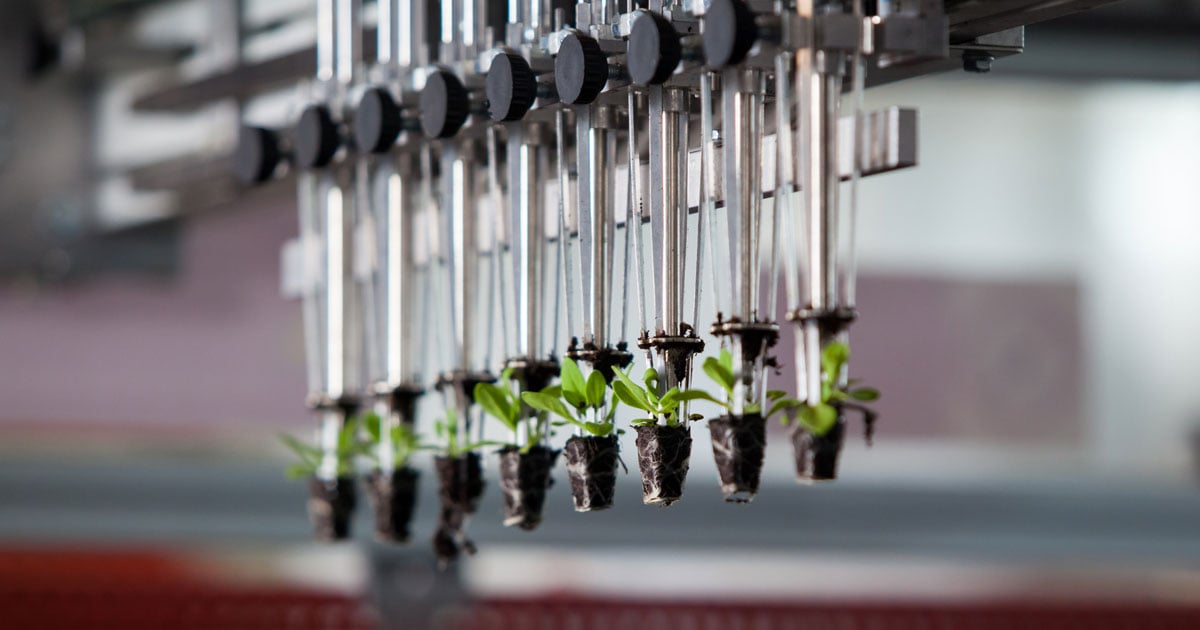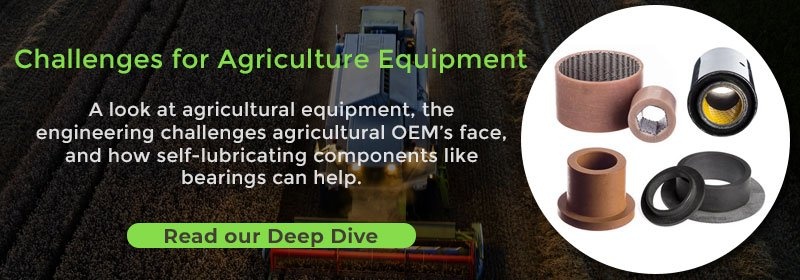4 min read
Three Important Trends for Agriculture and Agriculture Equipment
![]() Dave Biering
December 15, 2020
Dave Biering
December 15, 2020

Agriculture is the oldest industry in human history but remains defined by changing practices, technological innovations, and a never-ending quest for more efficient production. Continued innovation has been vital to feeding a growing global population while keeping food prices affordable.
In this blog post, we look at some key recent trends for agriculture. Collectively, these trends appear set to help support expected long-term demand growth for agricultural products. Concurrently, this growth will drive a continued need for agricultural equipment that can help farmers grow food more efficiently and sustainably.
Agriculture Trend One: Continuing Farm Consolidation
The consolidation of agricultural production from smaller producers to larger farms is a long term macro trend in the industry. This shift covers the entire industry, across virtually every type of crop and livestock. James MacDonald, agriculture research professor at the University of Maryland, writes that “what's been happening is a steady shift of acreage and production to larger operations that covers almost all crop and livestock commodities and that occurs steadily over three or four decades.”
More and more small firms are going out of business, replaced by fewer distinct operations operating on more acreage. MacDonald’s research shows that over the past 35 years:
- Production shifted to larger farms in 60 of the 62 tracked crop and livestock commodities.
- 2,000+ acre farms operated 15% of all cropland in 1987. By 2017, that figure was 37%.
- While much larger than before, the majority of farms are still family-owned.
This change is being driven, most of all, by the economies of scale that come with more specialized production, and the capital investment this specialization allows. More specialized producers simply have more economical options for investing in equipment that can improve yields.
Meanwhile, many remaining small farms are operated by older farmers who aren’t interested in selling their land to pursue a new career. As these farmers retire and age out of the workforce, this trend will only accelerate. The Association of Equipment Manufacturers notes that “there are more than two farmers over the age of 65 for every farmer under the age of 45 in the industry today. The average age of farm operators is 58—higher than it’s ever been—and many of these farmers’ children have already gone on to establish their own careers off the farm.”
There are few signs that this long term consolidation will abate anytime soon. It represents a growth-driver for equipment OEM’s, with larger farms able to afford greater investments in equipment, mechanization of more agricultural processes, and more willingness to consider any operational innovation that can improve the bottom line.
Agriculture Trends Two: Precision Agriculture
More than ever before, equipment innovation is being driven by digital technology that allows more data-driven, responsive, and precise agricultural work. From in-field sensors to UAVs, new digital applications are everywhere in agriculture. Farmers now have access to tools and software that can provide real-time intelligence on factors like:
- Soil Conditions via Soil Sampling
- Rainfall
- Crop Yield Monitors
- GPS-driven monitoring of equipment performance (and even autonomous vehicles that operate via GPS).
In addition to better data on the status of these vital production parameters, farm information management systems (FMIS) give farmers more powerful tools for tying operational decisions to their financial impact. Farmers are always juggling an incredibly complex array of factors. For instance, the most profitable crop to plant may depend on soil status, prices and market conditions forecasted months into the future, expected weather, transportation costs, and more. Software allows for a more systematic consideration of these trade-offs than ever before. And broader applications for AI and machine learning in agriculture are only now beginning to emerge.
Equipment makers are not only looking to deliver equipment that features more sensors and digital integration but exploring opportunities for providing broader farm management services (like predictive maintenance analytics to detect potential equipment failures before they cause an operational disruption during, for example, a critical time-sensitive harvest).
Collectively, these new technologies are closely related to consolidation. Farms are bigger, more business-oriented, and deeply interested in developing a more holistic understanding of yields than ever before. Better data and more sophisticated management tools will help farmers leave no stone unturned in the search for more efficient, profitable production.
Agriculture Trend Three: Accelerating Government-Led Investment
Food security is, understandably, a huge political priority for governments across the globe. As available arable land diminishes, the climate changes, and population grows, governments will only develop more focus on increasing food production wherever possible. Meanwhile, citizens of developing countries are consuming more calories as their income increases, putting more pressure on the global food supply. By 2050, average per capita calorie requirements are expected to be up 11% compared to 2003.
India provides subsidies of 40% of the total cost for rural entrepreneurs setting up farm machinery banks, which rent out equipment to small-acreage farmers to incentivize mechanized production even on traditional family farms.
From subsidized crops, to public investment in more productive equipment and farming methods, to government-backed loans for agricultural capital investment, the public sector will be seeking to enhance agricultural production using every tool available in the public policy toolkit.
Water and soil conservation are other vital areas for public involvement. More intensive agricultural production can degrade soil and stretch already overburdened water supplies, harming productive capacity even as demand surges. Governments are expected to invest in research regarding the practices and equipment needed to keep yields high while preserving soil fertility (and water usage) wherever possible. New machinery designs, for instance, play an important role in “conservation tillage” practices.
The long term imperative for more food production, backed by public investment, is another factor likely to drive a long term growth market for agriculture equipment.
Learning More: Better Components for More Efficient Agricultural Equipment
TriStar has worked with a variety of agricultural equipment OEM’s to help solve key engineering challenges for agriculture equipment. Bearings and other components fabricated from our advanced self-lubricating materials can offer greaseless operation for lower maintenance costs, less equipment downtime, and the functional characteristics needed to replace traditional metal bearings in a wide variety of applications.
When it comes to bearings in demanding agriculture applications, material selection matters.
We take pride in offering a true consultative engineering approach to all of our clients. Critical components like bearings perform best when they are carefully matched to relevant operational challenges (not treated as commodities to be sourced from the cheapest bidder). We work to understand each and every client application for clients large and small (many smaller OEM’s play a vital role designing and producing highly specialized agriculture equipment).
If you prefer to reach out directly to the TriStar team to discuss your agriculture product and its component needs, you can contact our bearings experts using the button below.










